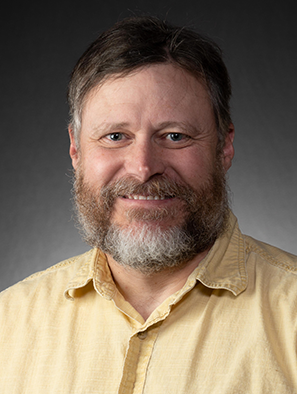
Scott Barbee
Associate Professor
303-871-3582 (Office)
http://mysite.du.edu/~sbarbee/
Seeley G. Mudd Building, 2101 E. Wesley Ave. Denver, CO 80208
What I do
The Barbee lab focuses on understanding roles for RNA/protein interactions in Drosophila models for neurodevelopment and neurodegeneration.Specialization(s)
Neurodevelopment, neurodegeneration, RNA biology
Degree(s)
- Ph.D., Cell and Developmental Biology, University of Colorado Health Sciences Center, 2004
- MS, Zoology and Physiology, University of Wyoming, 1998
Professional Affiliations
- Front Range Neuroscience Group
- RNA Society
Research
Areas of Research
Key Projects
- Exploring roles for FMR/P-bodies in presynaptic development


